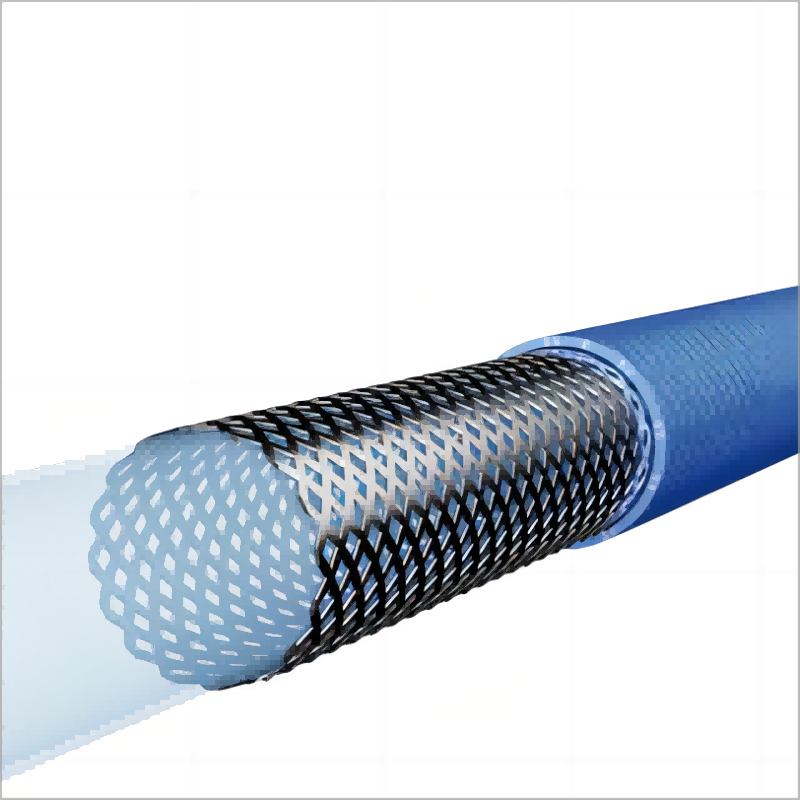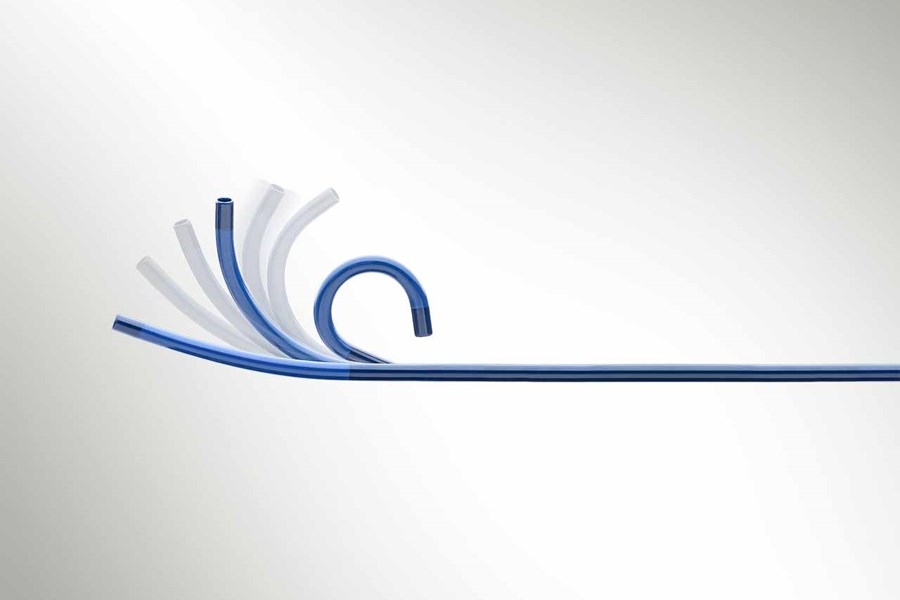Steerable shafts play a key role in medical procedures. The Demax Braid & Coil Reinforcement steerable shaft is a new device designed for better strength and flexibility. This makes it suitable for various medical applications. It is precisely made using advanced materials. The reinforced tubing offers strong performance and reliability. It is an essential tool for medical professionals in clinical settings.

Braid and coil reinforcement are vital for the durability of steerable shafts. The braid adds strength, while the coil gives flexibility. Together, they allow the shaft to navigate complex paths inside the body. This combination helps reduce the risk of failure during procedures. As a result, medical professionals can perform surgeries more safely and effectively.
Steerable Shaft Design
Functionality and Purpose
The Demax Braid & Coil Reinforcement steerable shaft is designed for medical procedures. It helps doctors move through the body accurately. The shaft is strong and flexible. This makes it suitable for different medical tasks. Its main purpose is to make surgeries and treatments more effective.
The outer layer of the shaft is made from TPU, Pebax, and PA. TPU stands for Thermoplastic Polyurethane. It makes the shaft durable and resistant to wear. Pebax is lightweight and flexible. PA stands for Polyamide, which adds extra strength. These materials work together to create a reliable medical tool.
Key Features for Flexibility and Control
The steerable shaft has important features that improve its flexibility and control. The braid and coil reinforcement system is a key part. The braid adds strength to the shaft. The coil allows the shaft to bend smoothly. This helps the shaft move easily through tight areas in the body.
Another feature is the reinforced tubing. It keeps its shape even when under pressure. This gives doctors better control during procedures. The shaft is also lightweight, making it easier to handle. The materials used ensure the shaft stays flexible without losing strength. These features make the Demax steerable shaft a valuable tool in many clinical settings.
Braid Reinforcement
Material Properties and Benefits
The middle layer of the shaft is made from SUS304, nickel-titanium wire, and stainless steel wire. SUS304 is a type of stainless steel. Nickel-titanium wire is flexible and strong. Stainless steel wire comes in round and flat shapes. These wires can be braided or made into springs.
This design provides high torque and strong operability. The wires give excellent pushing force. The shaft resists explosion and bending. These features make the shaft reliable during medical procedures.
The materials used are medical-grade. This ensures the shaft is safe for patient use. Medical-grade materials are biocompatible. They minimize the risk of adverse reactions. This reduces the chance of complications during treatments.
Impact on Strength and Flexibility
Braid reinforcement improves the shaft’s strength and flexibility. The braided wires add durability to the shaft. This makes the shaft strong and able to handle pressure. At the same time, the braid allows the shaft to bend smoothly. This flexibility helps navigate complex paths in the body.
Because of the braid reinforcement, the shaft can handle high torque. It also enhances operability for medical professionals. The combination of strength and flexibility ensures the shaft works well in different clinical settings. This makes the Demax Braid & Coil Reinforcement steerable shaft a valuable tool in medical procedures.
Coil Reinforcement
Functionality of Coil Reinforcements
The coil reinforcement plays a key role in the steerable shaft. It is located in the inner layer of the shaft. The materials used are PTFE, TPU, PEBAX, and PA. PTFE stands for Polytetrafluoroethylene. It provides smooth movement and reduces friction. TPU is Thermoplastic Polyurethane. It adds flexibility to the shaft. PEBAX is a lightweight material that enhances durability. PA stands for Polyamide, which gives extra strength. These materials work together to support the shaft’s movement and stability.

The coil reinforcement allows the shaft to bend easily. It helps the shaft navigate through tight areas in the body. This makes medical procedures easier and more precise. The coils can expand and contract as needed. This flexibility is important for reaching difficult spots during surgery. The combination of these materials ensures that the shaft remains reliable and effective during use.
How They Contribute to Durability and Performance
Coil reinforcements improve both durability and performance of the steerable shaft. The materials used make the shaft strong and long-lasting. PTFE reduces wear and tear by minimizing friction. TPU and PEBAX add flexibility without compromising strength. PA ensures the shaft can withstand high pressures and stresses.
This reinforcement allows the shaft to maintain its shape under pressure. It prevents the shaft from bending too much or breaking. As a result, the shaft performs well in various medical settings. Doctors can rely on the shaft to function properly during procedures. The durability means the shaft can be used many times without losing effectiveness. Overall, coil reinforcements make the Demax steerable shaft a dependable tool for medical professionals.
Applications
The Demax Braid & Coil Reinforcement Tube is used in many medical procedures. It helps deliver important fluids and agents during different treatments.
Vascular Interventions
The tube is used in vascular procedures. Doctors use it to deliver contrast media, saline solution, or therapeutic agents. Common procedures include angiography, angioplasty, and stent placement. This helps doctors see blood vessels clearly and treat blockages effectively.
Endoscopy
In endoscopic procedures, the tube plays a vital role. It delivers irrigation fluid, suction, or therapeutic agents. Procedures like gastroscopy, colonoscopy, and bronchoscopy rely on this tube. It helps doctors clean and treat areas inside the body with precision.
Urology Procedures
Urology procedures also benefit from this tube. It is used to deliver contrast media, saline solution, or therapeutic agents. Procedures such as cystoscopy, ureteroscopy, and nephrostomy use the tube. This helps in diagnosing and treating urinary system issues efficiently.
Surgical Procedures
During surgical procedures, the tube is essential. It delivers irrigation fluid, suction, or therapeutic agents. Surgeries like laparoscopy, arthroscopy, and neurosurgery use the tube. It helps keep the surgical area clean and provides necessary fluids for treatment.
Diagnostic Imaging
The tube is important in diagnostic imaging. It delivers contrast media during imaging tests. Procedures like computed tomography (CT), magnetic resonance imaging (MRI), and ultrasound use the tube. This helps in obtaining clear images for accurate diagnosis.
The Demax Braid & Coil Reinforcement Tube supports various medical fields. It ensures that doctors have the tools they need for effective and safe treatments.
Final Words
The Demax Braid & Coil Reinforcement steerable shaft is a reliable medical tool. It combines strength and flexibility for various procedures. The design includes durable outer and inner layers made from high-quality materials. Braid reinforcement adds strength and helps the shaft bend smoothly. Coil reinforcement ensures durability and maintains performance under pressure. These features make the shaft easy to use and safe for patients. It is used in many medical fields like vascular interventions, endoscopy, urology, surgery, and diagnostic imaging. Medical professionals can trust this shaft to perform well in different settings. Overall, the Demax steerable shaft is a valuable device that supports effective and safe medical treatments.